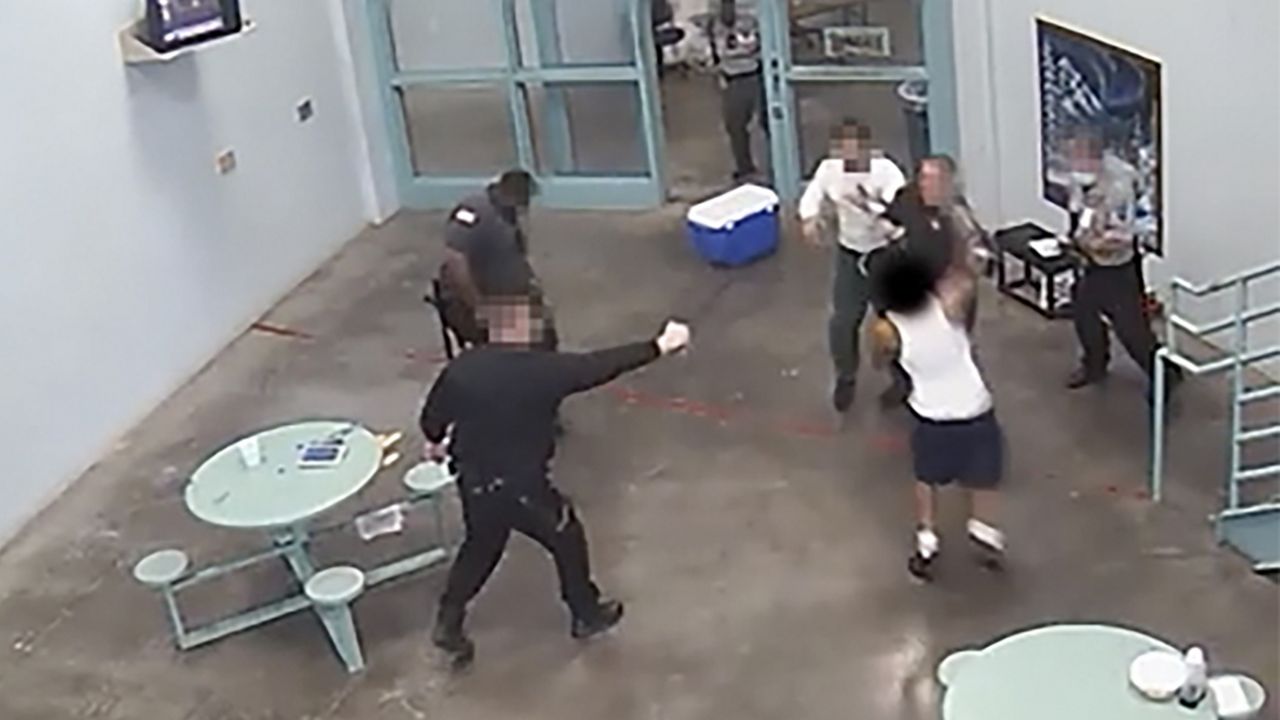A growing number of states’ prison systems are outfitting guards with body-worn cameras, even in correctional environments already covered by thousands of stationary security cameras.
Agencies hope the extra cameras will help reduce violence and hold both inmates and guards accountable, although experts and unions question their usefulness on top of existing cameras.
The Ohio Department of Rehabilitation and Correction hopes to announce by year’s end which of four companies has won a contract estimated at about $17 million a year.
The Ohio agency started examining the issue after a California judge ordered body-worn cameras for guards at a state prison in San Diego following allegations of abuse of prisoners with disabilities. California later expanded the cameras to five other prisons.
The death of an Ohio inmate in January during a scuffle with guards sped up the examination into using the cameras although the pilot program was already in the works, said Annette Chambers-Smith, director of the Ohio Department of Rehabilitation and Correction.
The system already has about 6,000 cameras in place in Ohio’s 28 prisons. But blind spots exist, as well as situations in which a body camera will help get to the truth, including whether an inmate or a guard is at fault, Chambers-Smith said.
“When you have cameras that are filming an incident, you don’t have to rely on memory or perhaps that tunnel vision that someone gets when they’re recounting an incident,” she said. “You can just see the totality of it.”
Two videos provided by the agency show the difference in perspectives that body-worn cameras can provide. As a fight broke out between two inmates at the Ohio State Penitentiary on July 27, a stationary camera positioned above the fray provided a clear view, but without audio.
A guard’s body-worn camera capturing the same fight provided a closer view of the confused situation, along with sound. “Lock the doors,” a guard can be heard yelling, and “Stop” multiple times, before another guard uses pepper spray on the inmates. In the body-worn camera version, it’s also easier to see and hear a guard gesture at a colleague to let another guard remove one of the inmates first.
The union representing prison employees in Ohio is skeptical of the cameras, saying the money could be better spent on hiring more guards. That’s especially true given how many stationary cameras are already in place, said Christopher Mabe, president of the Ohio Civil Service Employees Association.
“Right now we’re fighting to keep people employed in the department of corrections, because of the tight job market,” Mabe said. “Should we be putting more money into retention of officers and hiring of officers and hiring of staff, as opposed to allocating money for technology that is just redundant?”
The state prison system has about 6,130 corrections officers, down from around 6,660 in 2019. The inmate population has fallen during the same time period, from around 48,000 to around 43,000 prisoners.
The Ohio chapter of the American Civil Liberties Union is keeping an eye on the state’s plan, with questions including the circumstances under which guards are allowed to deactivate the cameras, and how long the prison system will retain the video, said Gary Daniels, the chapter’s top Ohio lobbyist. The latter question is important, given the state’s two-year window for filing civil liberties lawsuits, he said.
The Georgia Bureau of Prisons piloted the concept last year and plans to outfit guards in two prisons this year and another two next year. Florida doesn’t use them across the board, but since October 2020 has equipped specially trained officers at its 35 prisons with body cameras that automatically turn on when those officers activate stun guns.
New York state began piloting body-worn cameras in 2016 and expanded the test with an $835,000 federal grant. The system, costing about $4.2 million, has about 2,500 body-worn cameras in use in eight prisons, including the three women’s prisons, with plans to expand.
Virginia is planning to provide cameras to supervisors at high-security facilities, some members of teams that enter cells to extract inmates, and handlers of patrol and drug-sniffing dogs.
Wisconsin began outfitting officers at its six maximum-security prisons and one juvenile facility after the Legislature provided the agency with an initial $591,400 in 2017 in hopes of reducing staff and inmate assaults.
The agency now deploys about 200 body-worn cameras in the six prisons and about 100 in the Lincoln Hills & Copper Lake Schools juvenile facility, at a cost of about $895 per camera. Prisons spokesperson John Beard said that one downside is the view is sometimes obscured during close-up interactions with an inmate, but the audio is easily heard.
“Follow-up of allegations are easily completed by reviewing the incident and verifying if an investigation is needed or if the alleged incident didn’t occur,” Beard said.
Just as widespread use of body-worn cameras by police officers hasn’t reduced instances of use of force, body-worn cameras in prisons are unlikely to have a big impact, especially with the presence of so many stationary cameras, said criminal justice analyst Bryce Peterson.
Nearly all prison incidents are already recorded, and blind spots aren’t typically in places where a guard will be present to record illicit activity, including drug sales or a fight, said Peterson, a research scientist for CNA Corp., which focuses on improving safety. He said changes in use-of-force policy, better training and efforts to retain staff are more likely to reduce prison violence.
It’s likely that in some prisons, adding body-worn cameras, “just because it’s new intervention, it’s sort of a shock to the system and will have an impact,” Peterson said. “But I don’t think it’s a long-term cure for these issues.”



